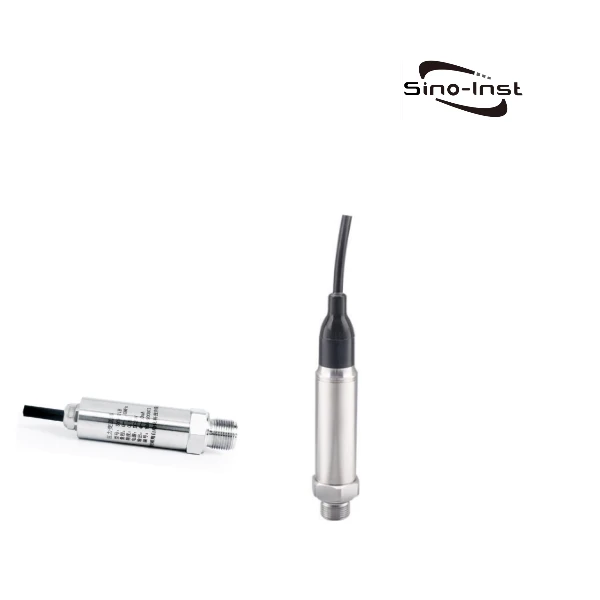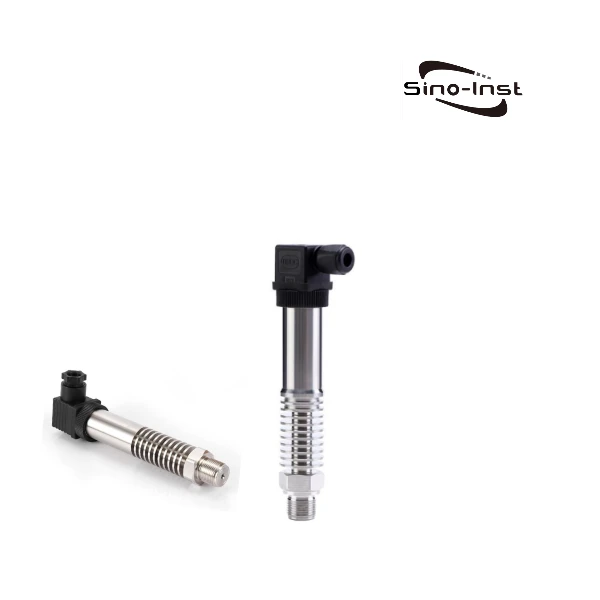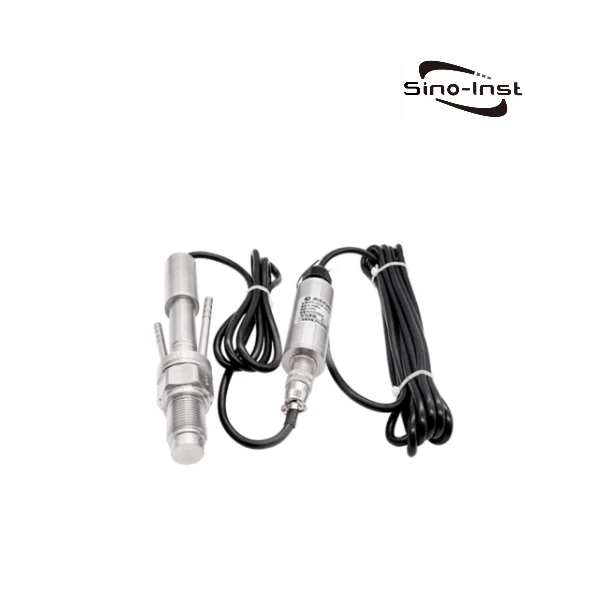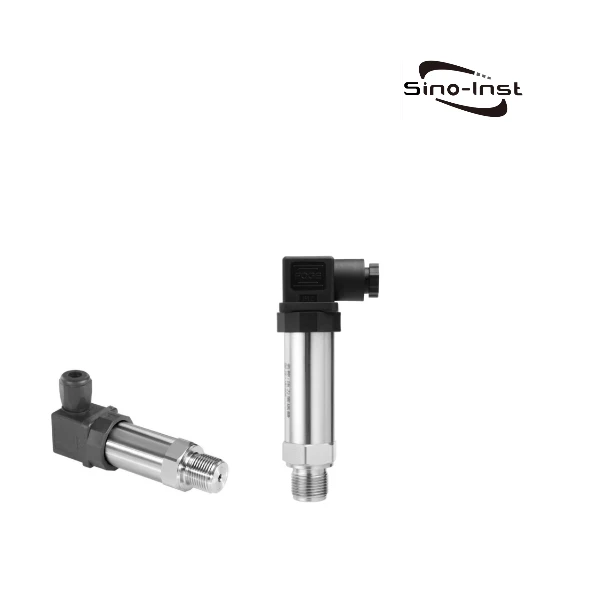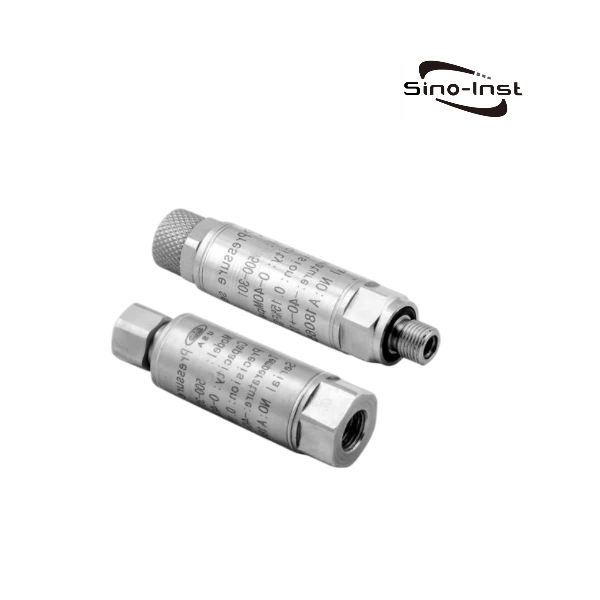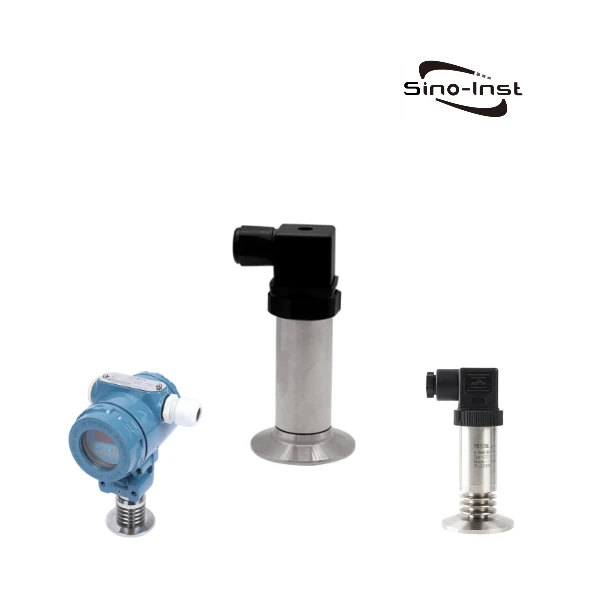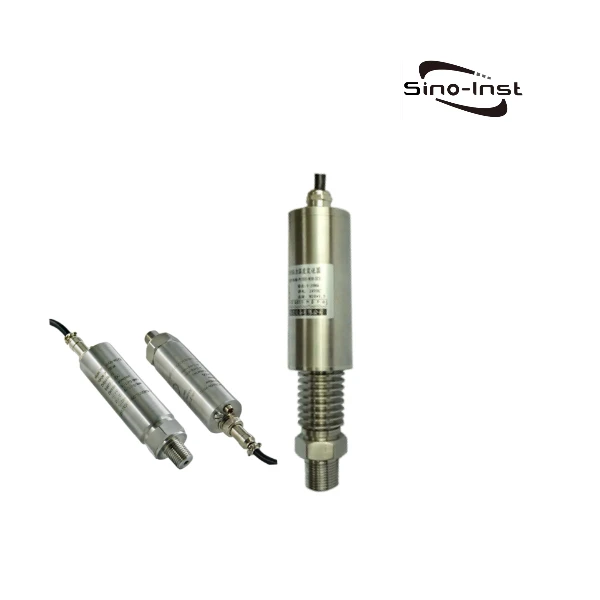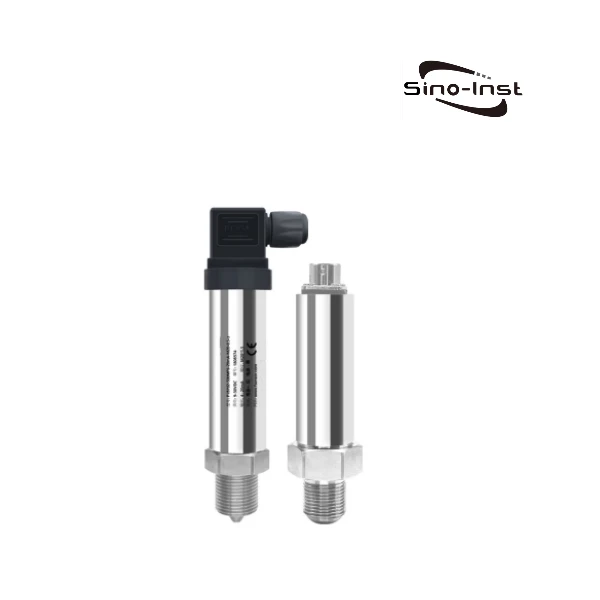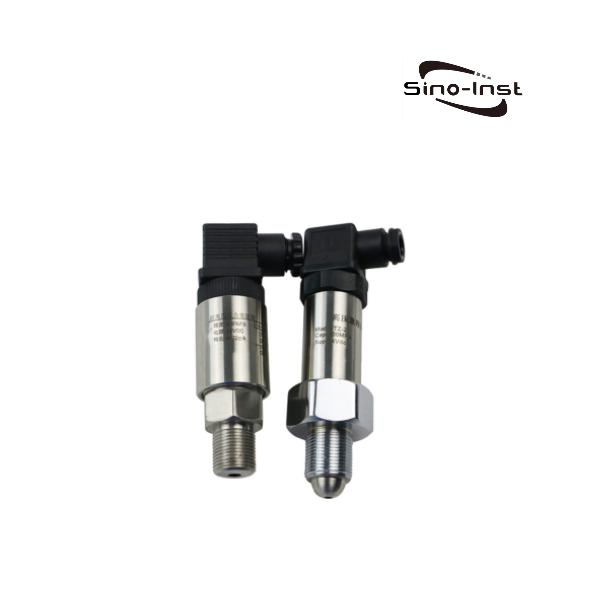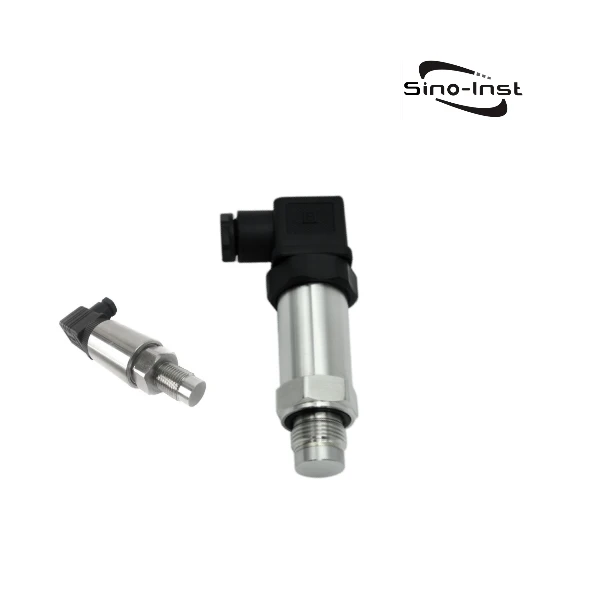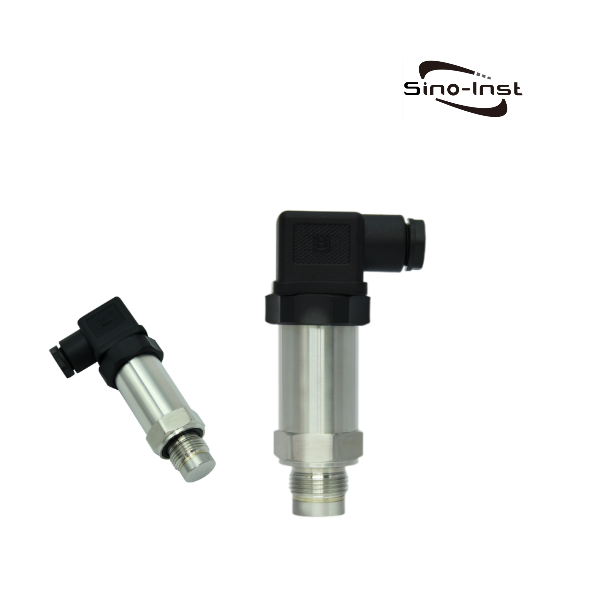
Diaphragm pressure sensor is also called Diaphragm pressure transmitter, or Flat membrane pressure transmitter.
SI-703 Diaphragm Pressure Sensor Strain-type flat membrane type measuring end adopts special treatment and strong flush diaphragm. Hard particles in the measured medium will not damage the isolated flush diaphragm. Diaphragm Pressure Sensor is suitable for pressure measurement of highly viscous or particulate fluids. The problem of media blockage in the pressure introduction hole is solved.
Features of Diaphragm Pressure Sensor
- No pressure hole, no cavity planar structure;
- With heat exchange fin design, high temperature resistance. Applicable medium temperature can reach 300°C;
- Provide low pressure, medium pressure, high pressure rich pressure range;
- The pressure port adopts 316L flat diaphragm structure. Hygienic and anti-scaling type;
- Flat membrane design is suitable for various viscous media;
- Various signal output forms, voltage, current, frequency signals, etc.;
- Various pressure ports are available;
- Sub-strain type and diffused silicon front type;
- Can measure absolute pressure, gauge pressure and sealed reference pressure;
- Good sealing, can work stably for a long time;
SI-703 Diaphragm Pressure Sensor Specifications
| Range: | 0-0.6,1,5,10,20,30,40,50~200MPa |
| Comprehensive accuracy: | 0.2%FS, 0.5%FS, 1.0%FS |
| Output signal: | 4-20mA (two-wire system), 0-5/1-5/0-10VDC (three-wire system) |
| Communication method: | RS485/232 |
| Supply voltage: | 24VDC (10-30VDC) |
| Medium temperature: | -20~85℃,Support high temperature customization |
| Ambient temperature: | -20~85℃ |
| Load resistance: current output type: | maximum 800Ω; voltage output type: greater than 50KΩ |
| Insulation resistance: | greater than 2000MΩ (100VDC) |
| Sealing grade: | IP65 |
| Long-term stability: | 0.1%FS/year |
| Vibration effect: | within the mechanical vibration frequency 20Hz ~ 1000Hz, the output change is less than 0.1%FS |
| Electrical interface: | direct outlet or aviation connector outlet |
| Mechanical connection: | G1/2, M20 × 1.5, etc. Other threads can be designed according to customer requirements |
| Overload pressure: | 200% FS |
| Burst pressure: | 300% FS |
Order Guide
| SI-703 | Diaphragm Pressure Sensor | ||
| Code | Pressure Range | ||
| (0~X)KPa | 0-0.6,1,5,10,20,30,40,50~200MPa | ||
| Code | Output Signal | ||
| B1 | 4-20mA | ||
| B3 | 0-10v | ||
| B4 | 0-5V | ||
| B5 | 1-5V | ||
| Code | Process Connection | ||
| P1 | M20*1.5 | ||
| P3 | G1/2 | ||
| P0 | Customize | ||
| Code | Electrical connections | ||
| C1 | Hirschman joint | ||
| C2 | Cable output | ||
| C3 | Aviation connector | ||
| Code | Structure Material | ||
| Diaphragm | Interface | Shell | |
| M1 | 316L | Stainless steel | Stainless steel |
| M3 | Tantalum | customize | customize |
| M4 | Hastelloy C | customize | customize |
| Code | Additional functions | ||
| G | Gauge pressure (default) | ||
| A | Absolute pressure | ||
| S | Sealed gauge pressure | ||
| D1 | Local display | ||
| Y2 | Blue protective shell | ||
| T | High temperature -XX℃ | ||
| SI-703 (0-40)MPa P1 C1 M1 G | |||
Learn More About Diaphragm Pressure Sensor
If you cannot find an answer to your question in our Diaphragm Pressure Sensor, you can always contact us
and we will be with you shortly.
More Featured Pressure Sensors
Sino-Inst is a manufacturer of Diaphragm pressure sensors. We supply more than 20 types of Diaphragm Pressure Sensors.
SI-703 Diaphragm Pressure Sensor is mainly used to measure viscous media. Such as chemical coatings, paint detection system. Environmental protection, coal mining, paper making, food processing. Polyurethane equipment, crude oil and other viscous media.
Compact structure, anti-corrosion, anti-vibration, anti-particle impact, wide range temperature compensation.
Diaphragm pressure sensor, including strain type and diffused silicon front type.
The strain-type flat-membrane measuring end adopts a specially-treated solid flush diaphragm, and the hard particles in the measured medium will not damage the isolation flush diaphragm. Compact structure, anti-corrosion, anti-vibration, anti-particle impact, wide range temperature compensation. It is especially suitable for measuring the fluid pressure of highly viscous matter or particles, and solves the problem of media blockage in the pressure introduction hole.
The diffused silicon front-end type is made of imported diffused silicon core, and uses adjustment and digital compensation technology. The product performance is reliable and the output is stable.
Sino-Inst has provided Different Types of Pressure measurement solutions to customers for many years. Our Different Types of Pressure Transmitters, made in China. Widely exported to the United States, Britain, Germany, South Africa, Norway and other countries.
If you need Diaphragm pressure sensors, but have technical questions, please feel free to contact our sales engineers.
SI-703 Diaphragm Pressure Sensor | Sino-Inst

Diaphragm pressure sensor is also called Diaphragm pressure transmitter, or Flat membrane pressure transmitter.SI-703 Diaphragm Pressure Sensor Strain-type flat membrane type measuring end adopts special treatment and strong flush diaphragm. Hard particles in the measured medium will not damage the isolated flush diaphragm. Diaphragm Pressure Sensor is suitable for pressure measurement of highly viscous or particulate fluids. The problem of media blockage in the pressure introduction hole is solved.
Product SKU: SI-703 Diaphragm Pressure Sensor
Product Brand: Sino-Inst
Product Currency: USD
Product Price: 260
Price Valid Until: 2029-09-09
Product In-Stock: InStock
5
-1.jpg)
